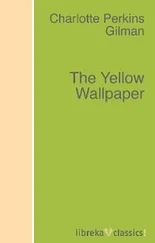Charlotte Gilman - The home - its work and influence
Здесь есть возможность читать онлайн «Charlotte Gilman - The home - its work and influence» — ознакомительный отрывок электронной книги совершенно бесплатно, а после прочтения отрывка купить полную версию. В некоторых случаях можно слушать аудио, скачать через торрент в формате fb2 и присутствует краткое содержание. Жанр: foreign_prose, на английском языке. Описание произведения, (предисловие) а так же отзывы посетителей доступны на портале библиотеки ЛибКат.
- Название:The home: its work and influence
- Автор:
- Жанр:
- Год:неизвестен
- ISBN:нет данных
- Рейтинг книги:4 / 5. Голосов: 1
-
Избранное:Добавить в избранное
- Отзывы:
-
Ваша оценка:
- 80
- 1
- 2
- 3
- 4
- 5
The home: its work and influence: краткое содержание, описание и аннотация
Предлагаем к чтению аннотацию, описание, краткое содержание или предисловие (зависит от того, что написал сам автор книги «The home: its work and influence»). Если вы не нашли необходимую информацию о книге — напишите в комментариях, мы постараемся отыскать её.
The home: its work and influence — читать онлайн ознакомительный отрывок
Ниже представлен текст книги, разбитый по страницам. Система сохранения места последней прочитанной страницы, позволяет с удобством читать онлайн бесплатно книгу «The home: its work and influence», без необходимости каждый раз заново искать на чём Вы остановились. Поставьте закладку, и сможете в любой момент перейти на страницу, на которой закончили чтение.
Интервал:
Закладка:
The growth and change of the home may be traced through all these forms, in every stage of mechanical, industrial, economic, artistic, and psychic development; but the stage we need to study is that we are now in, those homes which are pushed farthest in the forefront of the stream of progress. An average home of to-day, in this sense, is one of good social position, wherein the husband has sufficient means and the wife sufficient education to keep step with the march of events; one which we should proudly point out to a foreign visitor as "a typical American home."
Now, how does this home really stand under dispassionate observation?
The ideal which instantly obtrudes itself is this: A beautiful, comfortable house meeting all physical needs; a happy family, profoundly enjoying each other's society; a father, devotedly spending his life in obtaining the wherewithal to maintain this little heaven; a mother, completely wrapped up in her children and devotedly spending her life in their service, working miracles of advantage to them in so doing; children, happy in the home and growing up beautifully under its benign influence – everybody healthy, happy, and satisfied with the whole thing.
This ideal is what we are asked to lay aside temporarily; and in its place to bring our minds to bear on the palpable facts in the case. Readers of a specially accurate turn of mind may perhaps be interested enough to jot down on paper their own definite observations of, say, a dozen homes they know best.
One thing may be said here in defence of our general ignorance on this subject: the actual conditions of home life are studiously concealed from casual observation. Our knowledge of each other's homes is obtained principally by "calling" and the more elaborate forms of social entertainments.
The caller only reaches the specially prepared parlour or reception room; the more intimate friends sometimes the bedroom or even nursery, if they are at the time what we call "presentable"; and it is part of our convention, our age-long habit of mind, to accept this partial and prepared view as a picture of the home life. It is not.
To know any home really, you must live in it, "winter and summer" it, know its cellar as well as parlour, its daily habits as well as its company manners. So we have to push into the background not only the large, generally beautiful home ideal, smiling conventionally like a big bronze Buddha; but also that little pocket ideal which we are obliged to use constantly to keep up the proper mental attitude.
We are not used to looking squarely, open-eyed and critical, at any home, so "sacred" is the place to us. Now, having laid aside both the general ideal and the pocket ideal, what do we see?
As to physical health and comfort and beauty: Ask your Health Board, your sanitary engineer, how the laws of health are observed in the average home – even of the fairly well-to-do, even of the fairly educated. Learn what we may of art and science, the art of living, the science of living is not yet known to us. We build for ourselves elaborate structures in which to live, following architectural traditions, social traditions, domestic traditions, quite regardless of the laws of life for the creature concerned.
This home is the home of a live animal, a large animal, bigger than a sheep – about as big as a fallow deer. The comfort and health of this animal we seek to insure by first wrapping it in many thicknesses of cloth and then shutting it up in a big box, carefully lined with cloth and paper and occasionally "aired" by opening windows. We feed the animal in the box, bringing into it large and varied supplies of food, and cooking them there. Growing dissatisfied with the mess resultant upon this process, disliking the sight and sound and smell of our own preferred food-processes, yet holding it essential that they shall all be carried on in the same box with the animal to be fed; we proceed to enlarge the box into many varied chambers, to shut off by closed doors these offensive details (which we would not do without for the world), and to introduce into the box still other animals of different grades to perform the offensive processes.
You thus find in a first-class modern home peculiar warring conditions, in the adjustment of which health and comfort are by no means assured. The more advanced the home and its inhabitants, the more we find complexity and difficulty, with elements of discomfort and potential disease, involved in the integral – supposedly integral – processes of the place. The more lining and stuffing there are, the more waste matter fills the air and settles continually as dust; the more elaborate the home, the more labour is required to keep it fit for a healthy animal to live in; the more labour required, the greater the wear and tear on both the heads of the family.
The conditions of health in a representative modern home are by no means what we are capable of compassing.
We consider "antiseptic cleanliness" as belonging only to hospitals, and are content to spend our daily, and nightly, lives in conditions of septic dirt.
An adult human being consumes six hundred cubic feet of air in an hour. How many homes provide such an amount, fresh, either by day or night?
Diseases of men may be attributed to exposure, to wrong conditions in shop and office, to chances of the crowd, or to special drug habits. Diseases of women and children must be studied at home, where they take rise. The present conditions of the home as to health and comfort are not satisfactory.
As to beauty: we have not much general knowledge of beauty, either in instinct or training; yet, even with such as we have, how ill satisfied it is in the average home. The outside of the house is not beautiful; the inside is not beautiful; the decorations and furnishings are not beautiful. The home, by itself, in its age-long traditionalism, does not allow of growth in these lines; nor do its physical limitations permit of it. But as education progresses and money accumulates we hire "art-decorators" and try to creep along the line of advance.
A true natural legitimate home beauty is rare indeed. We may be perfectly comfortable among our things, and even admire them; people of any race or age do that; but that sense of "a beautiful home" is but part of the complex ideal, not a fact recognised by those who love and study beauty and art. We do not find our common "interiors" dear to the soul of the painter. So we may observe that in general the home does not meet the demands of the physical nature, for simple animal health and comfort; nor of the psychical for true beauty.
Now for our happy family. Let it be carefully borne in mind that no question is raised as to the happiness of husband and wife; or of parent and child in their essential relation; but of their happiness as affected by the home.
The effect of the home, as it now is, upon marriage is a vitally interesting study. Two people, happily mated, sympathetic physically and mentally, having many common interests and aspirations, proceed after marrying to enter upon the business of "keeping house," or "home-making." This business is not marriage, it is not parentage, it is not child-culture. It is the running of the commissary and dormitory departments of life, with elaborate lavatory processes.
The man is now called upon to pay, and pay heavily, for the maintenance of this group of activities; the woman to work, either personally, by deputy, or both, in its performance.
Then follows one of the most conspicuous of conditions in our present home: the friction and waste of its supposedly integral processes. The man does spend his life in obtaining the wherewithal to maintain – not a "little heaven," but a bunch of ill-assorted trades, wherein everything costs more than it ought to cost, and nothing is done as it should be done – on a business basis.
Читать дальшеИнтервал:
Закладка:
Похожие книги на «The home: its work and influence»
Представляем Вашему вниманию похожие книги на «The home: its work and influence» списком для выбора. Мы отобрали схожую по названию и смыслу литературу в надежде предоставить читателям больше вариантов отыскать новые, интересные, ещё непрочитанные произведения.
Обсуждение, отзывы о книге «The home: its work and influence» и просто собственные мнения читателей. Оставьте ваши комментарии, напишите, что Вы думаете о произведении, его смысле или главных героях. Укажите что конкретно понравилось, а что нет, и почему Вы так считаете.












